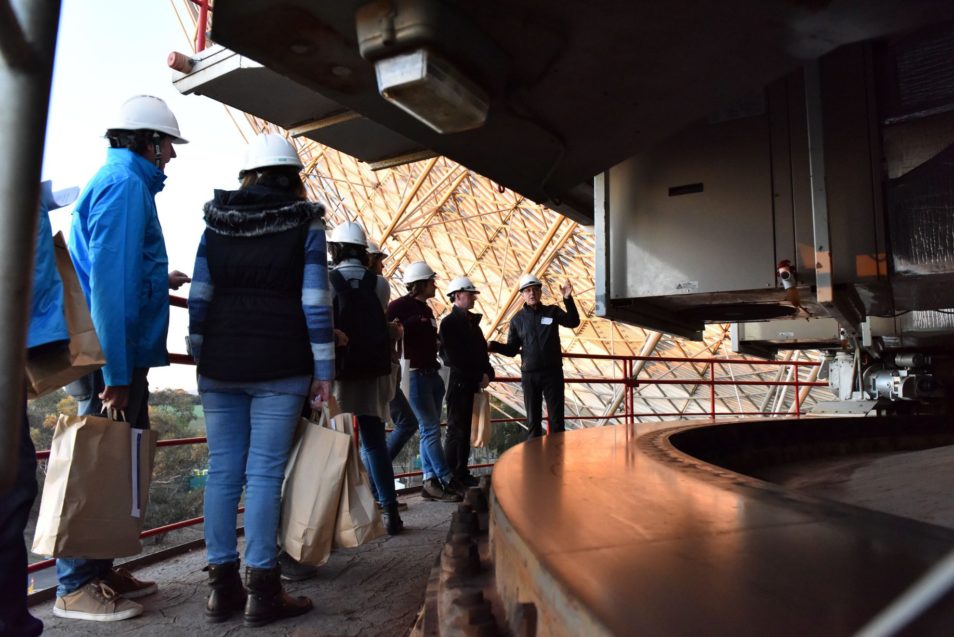
Working in space doesn’t mean leaving Earth! IMAGE: CSIRO
“I do a lot of running… I do ultra-marathons. I have run at night for so many hours seeing Mars in front of me and I can say that I have instruments there. It is something really special.”
That’s one of our lead scientists on cybernetics, Professor Paulo De Souza Junior. He’s been critical in how the world has been understanding Mars and the Universe. But he’s never stepped foot on the Red Planet. The thing is, you don’t have to go to space to explore its possibilities.
Take the Apollo 11 Moon landing, for example. Almost 50 years ago, we took ‘one giant leap’ for humankind when Neil Armstrong stepped onto the Moon. But did you know that Australia played an important role in the Moon landing? NASA’s Honeysuckle Creek Tracking Station near Canberra, which was built to support the Apollo program, received the footage of those first steps on the Moon. Honeysuckle Creek relayed the first eight minutes of those famous images seen by the world. After that, our Parkes telescope took over sharing the live images from the Moon.
Australia has always contributed to wider space research, and we haven’t left the atmosphere to do so.
Will there be life on Mars?
If you have a dog, you know that they age faster than humans. So, your two-year-old pooch is probably a 14-year-old teenager going through their angsty phase (we’ve all been there!).
Mars is also a place that ages really quickly. The clock on Mars runs fast in terms of geological evolution. This means Mars today is likely a good reflection of what Earth will be like in the future. This is because Mars and Earth actually have a similar past.
It all stems from the idea that Mars was once wet, and this is where Paulo’s work comes in. The instrument that Paulo and his team at Johannes Gutenberg University created was installed in the robotic arm of the Mars Rovers Spirit and Opportunity (RIP) and worked as a sensor. This sensor measured the data around with as little disturbance to the environment as possible. This enabled scientists looking through Opportunity and Spirit to see what minerals on Mars contained iron.
Iron is a key element in a lot of the minerals on Mars, and some of those minerals can only be formed with the presence of water. By analysing minerals, you not only understand how rocks are made but also confirm the presence of water in their formation.
“Opportunity found jarosite and haematite, minerals we can see in Australia. That was a huge discovery because we had proof—and that came from my instrument—that we had minerals that need water to be formed. Mars was once wet,” Paulo said.
And once there’s water there is also life. So while we’re floating the idea of us living on Mars, the presence of water could open a whole new world of opportunities for humans to actually live on the Red Planet.

One of the arms on this rover analysed the minerals found on Mars which investigated the presence of water on the red planet. To paraphrase Zoolander, water is the essence of wetness and wetness is the essence of life. IMAGE: NASA
Across the Universe
It’s easy to get carried away with the idea of us living on Mars like Matt Damon in ‘The Martian’, but hold your horses – there’s a catch. We’d need to be able to eat, breathe and live. This is where you can help.
We’d need to be able to grow crops to maintain our livelihoods and health. We’d also need to understand what the implications are for living in low gravity. This means we’d need to have great engineering.
From creating next-generation robotics to developing artificial intelligence to analyse data, there are lots of careers in space that don’t require you to leave home.
“The great thing about space and space exploration is that it takes all different types of science and other disciplines,” Dr Sarah Pearce, Deputy Director of CSIRO Astronomy and Space Science said.
Take for example the recent announcement from NASA who say they’re looking to build a settlement on the Moon.
Building a settlement in outer space not quite your scene? Then check out the burgeoning space scene in Australia and see how you could help.
“It’s a really exciting time at the moment with space in Australia. There’s been an explosion of space start-ups that we’ve got here. More than 90 start-ups have emerged over the past three years,” Sarah said.
“Now we’re starting to see that people are really believing that they can build a career in space in Australia. Some people are starting to come back and work in Australian companies and work in Australian start-ups.”

We need a wide range of professions if we’re looking to live on Mars. IMAGE: CSIRO
To infinity and beyond?
While Paulo and his team at Johannes Gutenberg University helped collect the data on Mars, interpreting it from Earth could take more time to understand.
“I could dedicate the rest of my life solely to looking at the data we’ve collected,” Paulo said.
This means there needs to be more resources and jobs dedicated to space exploration, especially if we’re figuring out how to live on the Red Planet.
The fun thing is, many of the jobs of the future haven’t even been invented yet. But you can bet they’ll involve some sort of science, technology, engineering, maths or medicine (STEMM).
“The more young scientists we bring in, those opportunities for developing space technology can translate into so many other areas on Earth. Like advanced manufacturing, medical devices, environmental monitoring. The whole Universe is opened up – literally,” Paulo said.
So whether you’re a tinker, data scientist, engineer or even a mathematician, there’s always space for your next career!


30th August 2019 at 3:57 am
looks sustainable hard growing light life nag in the que